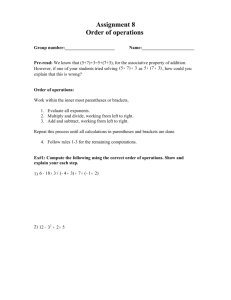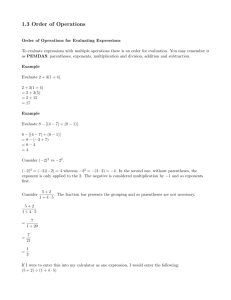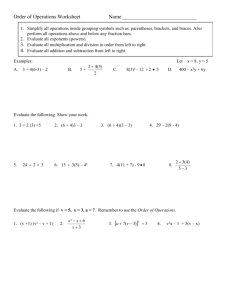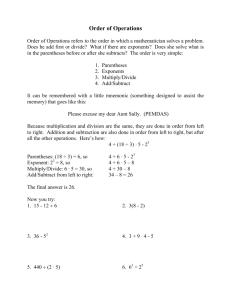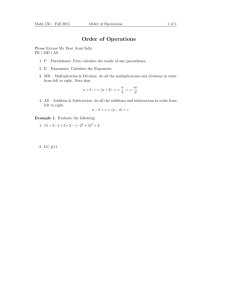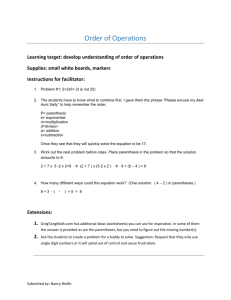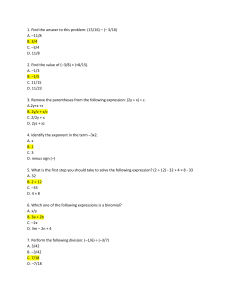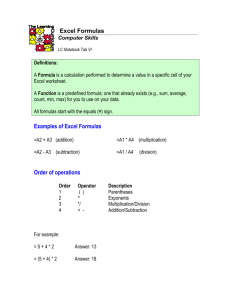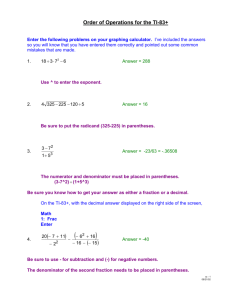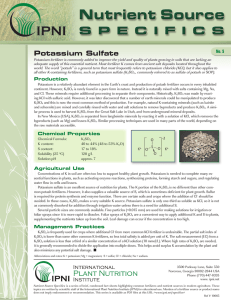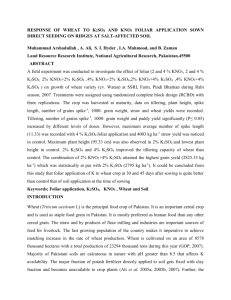Understanding Chemical Formulas
advertisement
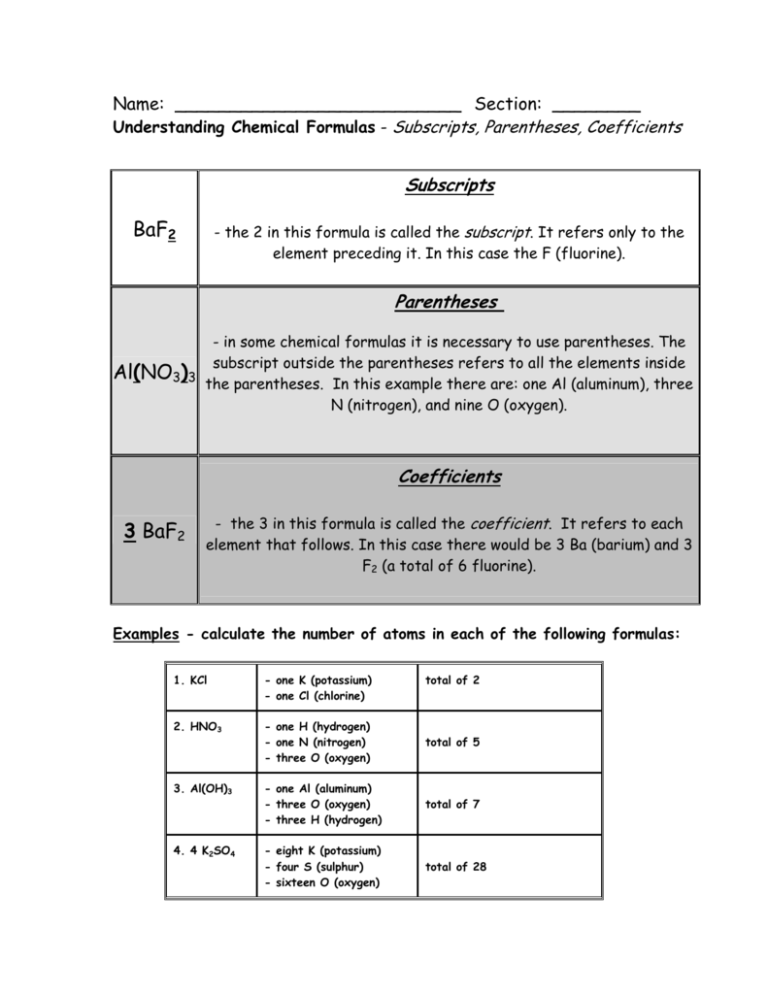
Name: __________________________ Section: ________ Understanding Chemical Formulas - Subscripts, Parentheses, Coefficients Subscripts BaF2 - the 2 in this formula is called the subscript. It refers only to the element preceding it. In this case the F (fluorine). Parentheses - in some chemical formulas it is necessary to use parentheses. The subscript outside the parentheses refers to all the elements inside Al(NO3)3 the parentheses. In this example there are: one Al (aluminum), three N (nitrogen), and nine O (oxygen). Coefficients 3 BaF2 - the 3 in this formula is called the coefficient. It refers to each element that follows. In this case there would be 3 Ba (barium) and 3 F2 (a total of 6 fluorine). Examples - calculate the number of atoms in each of the following formulas: 1. KCl - one K (potassium) - one Cl (chlorine) total of 2 2. HNO3 - one H (hydrogen) - one N (nitrogen) - three O (oxygen) total of 5 3. Al(OH)3 - one Al (aluminum) - three O (oxygen) - three H (hydrogen) total of 7 4. 4 K2SO4 - eight K (potassium) - four S (sulphur) - sixteen O (oxygen) total of 28 Directions: Use the information on the front of this sheet to calculate the individual and total number of atoms in each of the following. 1. NaCl Na – Total 6. 6 H2SO4 Cl – H– Total S– O– 2. Al(C2H3O2)3 Al – Total 7. Si(HCO3)4 C– H– H– C– O– 3. 2 KOH 4. KMnO4 5. K2SO4 Si – K– O– Total 8. 2 HNO3 H– O– N– H– O- K– Total 9. 2 Al(CO2)3 Al – Mn – C– O– O- K– Total Total 10. 3 B2(CO3)3 B– S– C– O– O– Total Total Total
